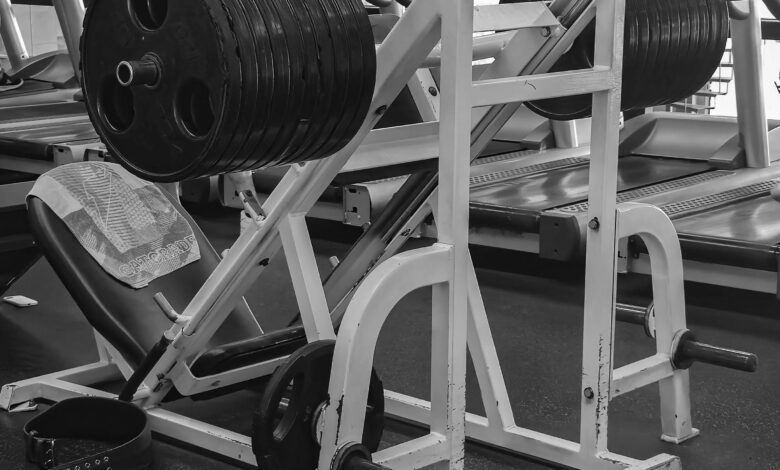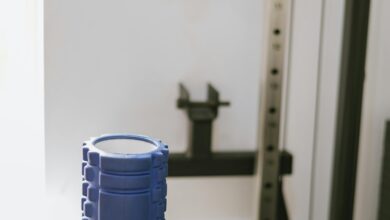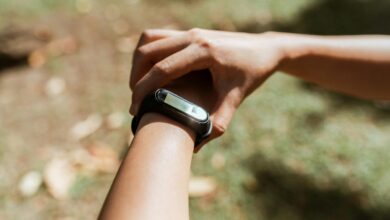How to Maintain Your Fitness Equipment for Longevity

Investing in fitness equipment is a significant commitment, whether you’re outfitting a home gym or managing a commercial facility. To ensure your equipment remains functional, safe, and efficient for years to come, regular maintenance is essential. Proper care not only extends the lifespan of your gear but also enhances performance and prevents costly repairs or replacements.
In this comprehensive guide, we’ll walk you through the best practices for maintaining your fitness equipment, covering everything from daily cleaning routines to periodic inspections and professional servicing.
Why Is Maintaining Fitness Equipment Important?
Neglecting maintenance can lead to several issues, including:
- Safety Hazards : Worn-out parts or malfunctioning equipment can cause injuries.
- Reduced Performance : Poorly maintained machines may not function as intended, impacting workouts.
- Costly Repairs : Minor issues can escalate into major problems if left unaddressed.
- Shortened Lifespan : Lack of care accelerates wear and tear, forcing premature replacements.
By prioritizing maintenance, you protect your investment, ensure user safety, and maximize the value of your equipment.
Step 1: Develop a Regular Cleaning Routine
Dirt, sweat, and grime can accumulate on fitness equipment, leading to corrosion, odors, and mechanical issues. A consistent cleaning regimen is the first line of defense.
Daily Cleaning Tips
- Wipe Down Surfaces
Use a microfiber cloth and a mild cleaning solution (e.g., water mixed with vinegar or a non-abrasive cleaner) to wipe down handles, seats, and touchpoints after each use. Avoid harsh chemicals that can damage materials. - Disinfect High-Touch Areas
Focus on areas like control panels, weight stacks, and resistance bands, which are prone to bacteria buildup. - Remove Dust and Debris
Use a soft brush or vacuum to clean hard-to-reach areas, such as under treadmills or inside elliptical frames. - Inspect for Moisture
Ensure no liquid has seeped into electronic components, as this can cause malfunctions.
Weekly Deep Cleaning
- Remove detachable parts (e.g., seat pads, pedals) for thorough cleaning.
- Check for mold or mildew in fabric-covered areas and treat them promptly.
- Lubricate moving parts, such as treadmill belts or bike chains, using manufacturer-recommended products.
Step 2: Perform Routine Inspections
Regular inspections help identify potential problems before they escalate. Create a checklist to evaluate different aspects of your equipment.
What to Inspect
- Structural Integrity
Look for cracks, loose bolts, or bent frames. Tighten screws and replace damaged parts immediately. - Moving Components
Test cables, pulleys, belts, and gears for smooth operation. Replace worn or frayed cables to prevent accidents. - Electronics
Check displays, buttons, and sensors for functionality. Ensure power cords and plugs are intact and free of fraying. - Padding and Upholstery
Examine cushions, mats, and upholstery for tears or excessive wear. Replace damaged items to maintain comfort and hygiene. - Weight Systems
Verify that weight stacks slide smoothly and pins are secure. Lubricate guide rods as needed. - Shock Absorbers
For cardio machines like treadmills, inspect shock absorbers and deck surfaces for signs of wear.
Step 3: Follow Manufacturer Guidelines
Each piece of equipment comes with specific maintenance instructions from the manufacturer. Adhering to these guidelines ensures optimal performance and preserves warranties.
Key Actions
- Refer to the owner’s manual for recommended cleaning agents, lubricants, and maintenance schedules.
- Keep records of all maintenance activities, including dates and details of inspections or repairs.
- Use only authorized replacement parts when making repairs.
Ignoring manufacturer recommendations can void warranties and compromise safety.
Step 4: Address Wear and Tear Promptly
Even with diligent care, fitness equipment will experience normal wear and tear over time. Addressing these issues early prevents further damage.
Common Signs of Wear
- Squeaking or grinding noises from moving parts
- Uneven or jerky movements in treadmills or ellipticals
- Fading or peeling paint on frames
- Loose or broken components
How to Fix Common Issues
- Squeaky Parts : Apply silicone-based lubricant to hinges, joints, or rollers.
- Slipping Belts : Adjust tension according to the manufacturer’s instructions or replace the belt if necessary.
- Loose Bolts : Tighten all connections securely to prevent instability.
If you’re unsure how to fix a problem, consult a professional technician rather than attempting DIY repairs.
Step 5: Schedule Professional Servicing
While routine maintenance can handle many tasks, professional servicing is crucial for more complex issues and periodic deep cleaning.
When to Call a Technician
- Annual or biannual check-ups for high-use equipment
- Persistent mechanical problems despite troubleshooting
- Calibration of advanced features, such as heart rate monitors or incline settings
- Replacement of internal components, such as motors or circuit boards
Professional servicing ensures that hidden issues are detected and resolved before they become critical.
Step 6: Educate Users on Proper Usage
Improper use is a leading cause of equipment damage. Educating users on correct techniques and etiquette helps preserve your gear.
Tips for Users
- Follow Instructions : Provide clear guidance on operating machines safely.
- Avoid Overloading : Stick to weight limits and usage guidelines to prevent strain on components.
- Use Accessories Correctly : Ensure attachments like resistance bands or stability balls are used as intended.
- Report Issues Immediately : Encourage users to notify you of any malfunctions or unusual behavior.
For home gyms, remind family members or guests to respect the equipment and clean up after use.
Step 7: Store Equipment Properly
Proper storage protects equipment from environmental factors that can accelerate deterioration.
Storage Tips
- Indoor Storage : Keep equipment in a dry, climate-controlled space to avoid rust and warping.
- Cover Machines : Use protective covers for treadmills, bikes, or benches when not in use.
- Avoid Direct Sunlight : Prolonged exposure to UV rays can fade colors and weaken materials.
- Organize Space : Arrange equipment to allow adequate ventilation and prevent overcrowding.
For portable items like dumbbells or resistance bands, store them on racks or hooks to prevent clutter and damage.
Step 8: Upgrade When Necessary
Even with meticulous care, fitness equipment has a finite lifespan. Recognizing when it’s time to upgrade ensures continued safety and efficiency.
Signs It’s Time to Replace Equipment
- Frequent breakdowns despite repairs
- Outdated technology that no longer meets your needs
- Excessive noise or vibrations during operation
- Visible structural damage that cannot be fixed
When upgrading, consider energy-efficient models or those with enhanced durability to minimize future maintenance needs.
Common Mistakes to Avoid
Even well-meaning efforts can fall short without attention to detail. Here are some common mistakes to avoid:
- Skipping Regular Maintenance : Consistency is key; don’t wait until something breaks.
- Using Incorrect Cleaning Products : Harsh chemicals can corrode surfaces or damage electronics.
- Overlooking Small Issues : Ignoring minor problems can lead to major failures.
- Neglecting User Training : Improper use accelerates wear and increases repair costs.
- Storing Improperly : Exposure to moisture or extreme temperatures can ruin equipment.




